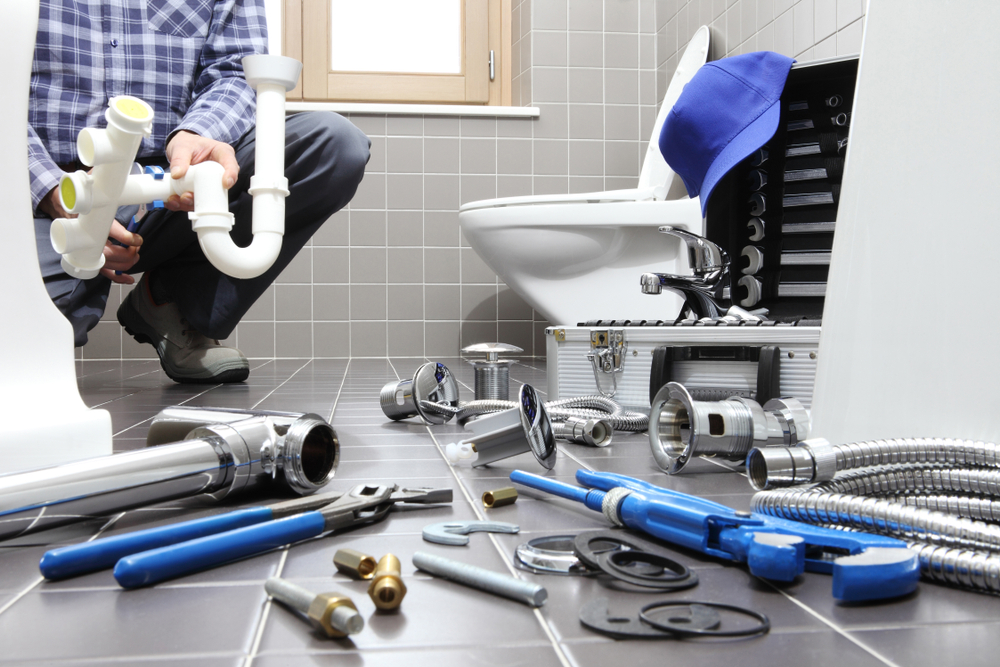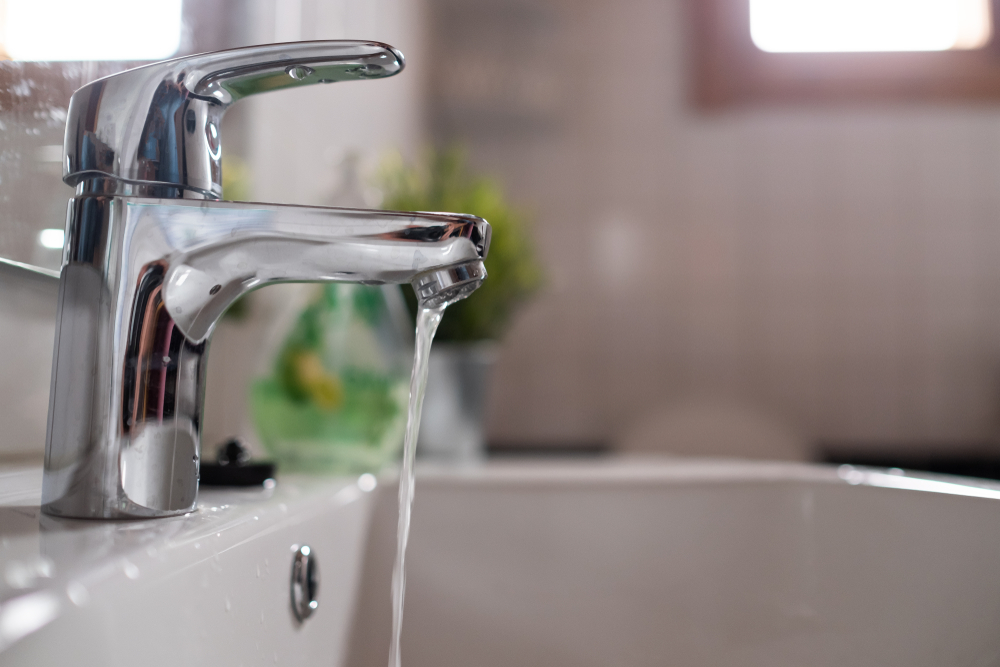More often than most homeowners know, plumbing expertise is quite useful. Knowing fundamental plumbing skills will help you save time and money whether your problem is a clogged drain or a leaking faucet. Good plumbing guarantees that little problems don’t become big ones. This guide will walk you through frequent problems, basic plumbing techniques and tips, required supplies, and doable maintenance advice. By the time this book ends, you will be more sure of yourself in managing simple plumbing chores around your house.
Understanding Basic Plumbing Terminology
Although plumbing seems complicated, understanding the fundamental vocabulary helps one to grasp it. Knowing these words will enable you to more boldly handle do-it-yourself projects and interact with experts.
A. Key Plumbing Terms
- Pipes: The backbone of your plumbing system, pipes deliver water from and to many areas of your house. One can create them from PEX, copper, or PVC.
- Valves: Water in your plumbing system is flowed under control via valves. They allow one to turn off water to particular regions, facilitating replacements or repairs. Two such are gate valves and ball valves.
- Fixtures: Your plumbing system’s outside components—sinks, faucets, showers, toilets—are known as fixtures and you interact with them every day.
- Fittings: Fittings branch off to other pipes or change direction to link several pipe sections. Common fittings call for couplings, tees, and elbows.
- Traps: Designed to hold water, curved portions of pipe called traps stop sewer gasses from getting into your house. Usually located beneath sinks, the P-trap is a standard example.
B. How They Work Together
Working together, these parts produce a flawless plumbing system. Pipes carry water; valves regulate flow; fixtures supply water; traps stop smells. Fittings guarantee seamless water flow through your house and link everything. Diagnosing and resolving plumbing problems depend on a fundamental knowledge of these components.

Essential Tools for Basic Plumbing Work
Dealing with plumbing issues calls for specific instruments. Having a basic plumbing toolset will help you easily manage most domestic plumbing chores.
A. List of Necessary Tools
- Adjustable Wrench: Tightening or loosening nuts and bolts calls for a changeable wrench. Its flexible jaw lets it fit many fastener sizes.
- Pipe Wrench: Installing or removing threaded pipes and fittings depends critically on a pipe wrench gripping and turning pipes.
- Plunger: Clearing obstructions in toilets, sinks, and tubs calls for a plunger most of the time. Its suction action releases obstructions.
- Tongue-and-Groove Pliers: Excellent for holding and rotating pipes, these pliers’ adjustable jaws making them valuable for a variety of plumbing projects.
- Tubing Cutter: Cutting across copper, PVC, or PEX pipes calls for a tubing cutter. It reduces leak risk by making neat cuts that exactly fit fittings.
- Hacksaw: Perfect for plumbing jobs requiring cutting, a hacksaw is a flexible tool able to cut metal pipes, plastic tubing, even fasteners.
- Plumber’s Tape (Teflon Tape): Threaded pipe joints are sealed using Teflon tape, therefore stopping leaks. Making watertight connections in your plumbing system depends on it.
- Drain Snake (Auger): Tough obstructions in sink, toilet, and drain systems can be cleared with a drain snake. Its flexible cable breaks through obstructions a plunger cannot manage.
B. Explanation of Their Uses
Every instrument serves a certain purpose in plumbing repairs. Wrenches tighten and loosen connections; pliers grab and turn pipes; a tubing cutter guarantees exact, clean cuts. Clearing blockages calls for plungers; a drain snake removes tougher jams far down in the pipes. Tight seals guaranteed by teflon tape stop leakage in threaded connections. Having these items available can help most simple plumbing chores to be handled.
Common Plumbing Issues and How to Fix Them
Every home has typical plumbing problems. Knowing how to handle these issues will save you from pointless annoyance and expensive repairs.
A. Leaking Pipes
A common problem that, if left untreated can seriously damage water supplies is leaking pipes. Finding the source of a leak marks the first phase in repairs.
Step-by-Step Solution:
- Turn off the water supply to the affected area.
- Dry the area around the leak.
- Use a pipe clamp or epoxy putty for a temporary fix.
- For a permanent repair, replace the damaged section of the pipe.
- Turn the water back on and check for leaks.
B. Clogged Drains
Slowed down drainage or standing water might result from clogged pipes. Early address of a clog helps to avoid more major obstructions later on.
Step-by-Step Solution:
- Use a plunger to dislodge the clog.
- If the plunger doesn’t work, use a drain snake to break up the blockage.
- For stubborn clogs, consider using a chemical drain cleaner as a last resort.
- Flush the drain with hot water to clear any remaining debris.
C. Running Toilets
A running toilet can raise your utility expenses and waste water. Usually, the flapper or fill valve is the issue.
Step-by-Step Solution:
- Taking off the toilet tank lid, check the flapper.
- Verify the flapper is not worn out and seated correctly.
- Should damage occur, replace the flapper with a fresh one.
- Change the float level to guarantee the tank finishes filling at the correct water level.
- To be sure the problem is fixed, test the toilet.
Low Water Pressure
Clogged pipes, a broken pressure regulator, or mineral build-up in fixtures can all cause low water pressure.
Step-by-Step Solution:
- To find if the problem is limited to one area, check every faucet.
- If localized, clean the faucet aerator or showerhead to remove mineral buildup.
- If widespread, check the main shut-off valve and ensure it’s fully open.
- Should the issue continue, you could have to pay an expert to check for pipe clogs or examine your pressure regulator.

Tips for Maintaining a Healthy Plumbing System
Frequent maintenance helps many plumbing issues avoid starting. A well-kept system guarantees effective operation of your plumbing and lowers the possibility of expensive repairs.
A. Preventive Measures
- Regular Inspections: Review your plumbing often for leaks, drips, or corrosion indicators. Early resolution of minor problems helps to avoid their escalation into more serious ones.
- Avoid Harsh Chemicals: Chemical drain cleaners could ruin your pipes even if they can eliminate obstructions. Instead choose mechanical techniques like drain snakes or plungers.
- Insulate Pipes: In cold parts of your house, insulating pipes will help them not freeze and break during winter.
B. Signs of Potential Plumbing Problems
- Slow Drainage: Should your tubs or sinks drain slowly, this could point to a pipe clog developing.
- Unusual Noises: Gurgling sounds in your drains or pipes can indicate a blockage or improper venting.
- Water Stains: Water marks on ceilings or walls usually indicate concealed leaks requiring quick treatment.
Your plumbing system will be working perfectly for years to come if you remain alert and take early care of problems.
Safety Precautions for DIY Plumbing Work
While do-it-yourself plumbing can save money, always safety should come first. By following the correct safety measures, you will help to prevent mishaps and guarantee successful repairs.
A. Importance of Turning Off the Main Water Supply
Always switch off the main water supply to avoid flooding before beginning any plumbing project. Should the water supply not be turned off, even a little repair can result in major water damage. Make sure your main shut-off valve is located and that you know how to run it.
B. Protective Gear to Wear
- Gloves: Put on gloves to guard your hands against pipe contaminants, sharp tools, and chemicals.
- Safety Glasses: Safety goggles protect your eyes from chemicals, dirt, and dust.
- Knee Pads: Many times, plumbing requires kneeling for long stretches of time; thus, wearing knee pads helps to avoid pain and damage.
C. When to Call a Professional Plumber
While doing your own plumbing can be fulfilling, some jobs need for professional plumber knowledge. See a licensed plumber if you are handling difficult problems such significant leaks, gas lines, or sewer repairs. Also, don’t hesitate to visit a professional if you’re not confident about a project or feel awkward managing it yourself.
Conclusion
Learning fundamental plumbing skills will enable you to independently handle many home problems. Knowing important plumbing vocabulary, having the correct tools, and knowing how to solve typical issues will save you time and money. Following safety guidelines and routine maintenance help to guarantee that your plumbing system stays in good health. Although understanding when to call a professional is just as crucial, even if DIY plumbing is a useful ability.
Confidence in your plumbing skills can help you to manage any little problems that develop, so maintaining the operating order of your house.
Plumbing Services CA
https://maps.app.goo.gl/31Yt4rhDrainzNJ4A
(279) 203-0765
https://plumbingservicesca.com/
